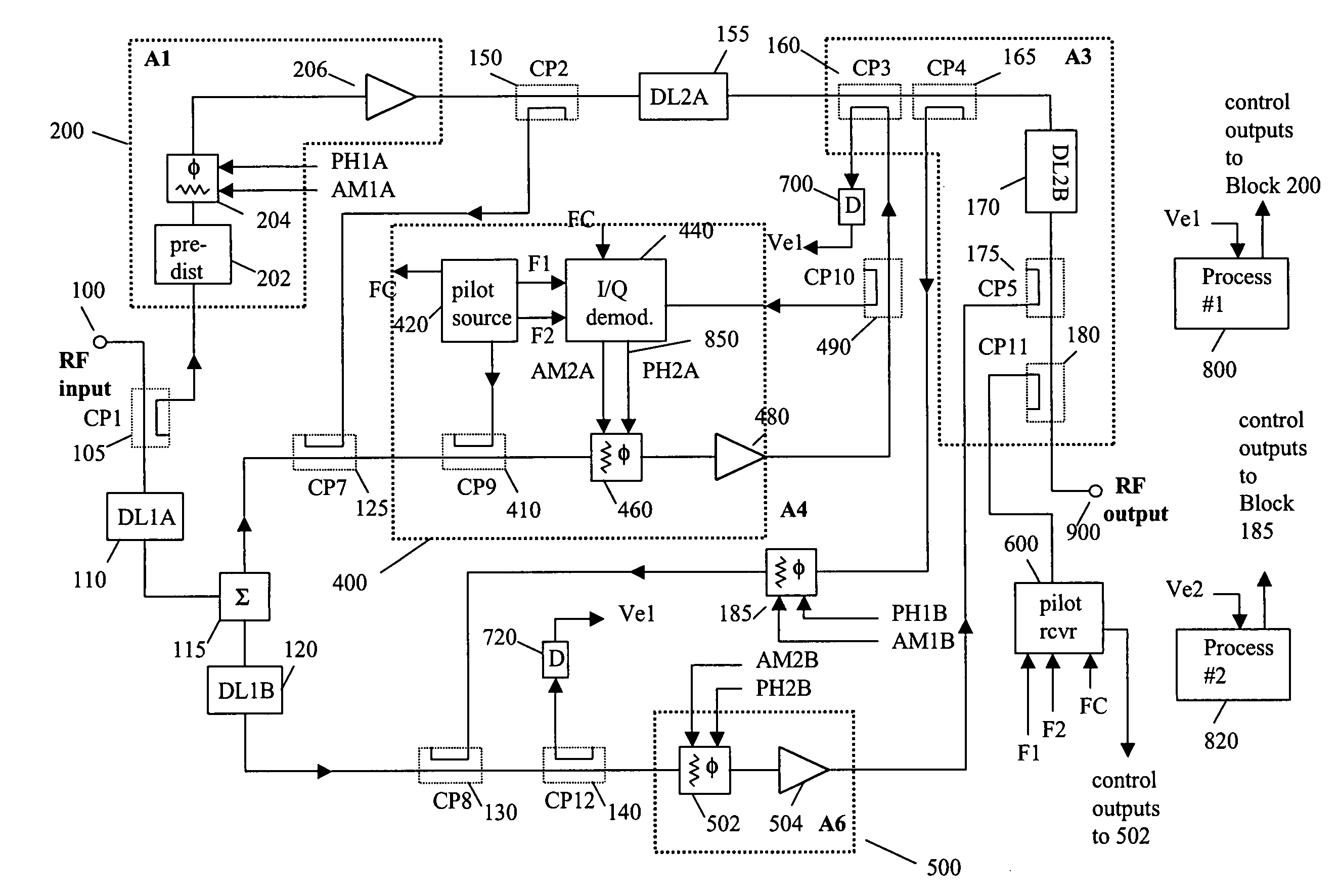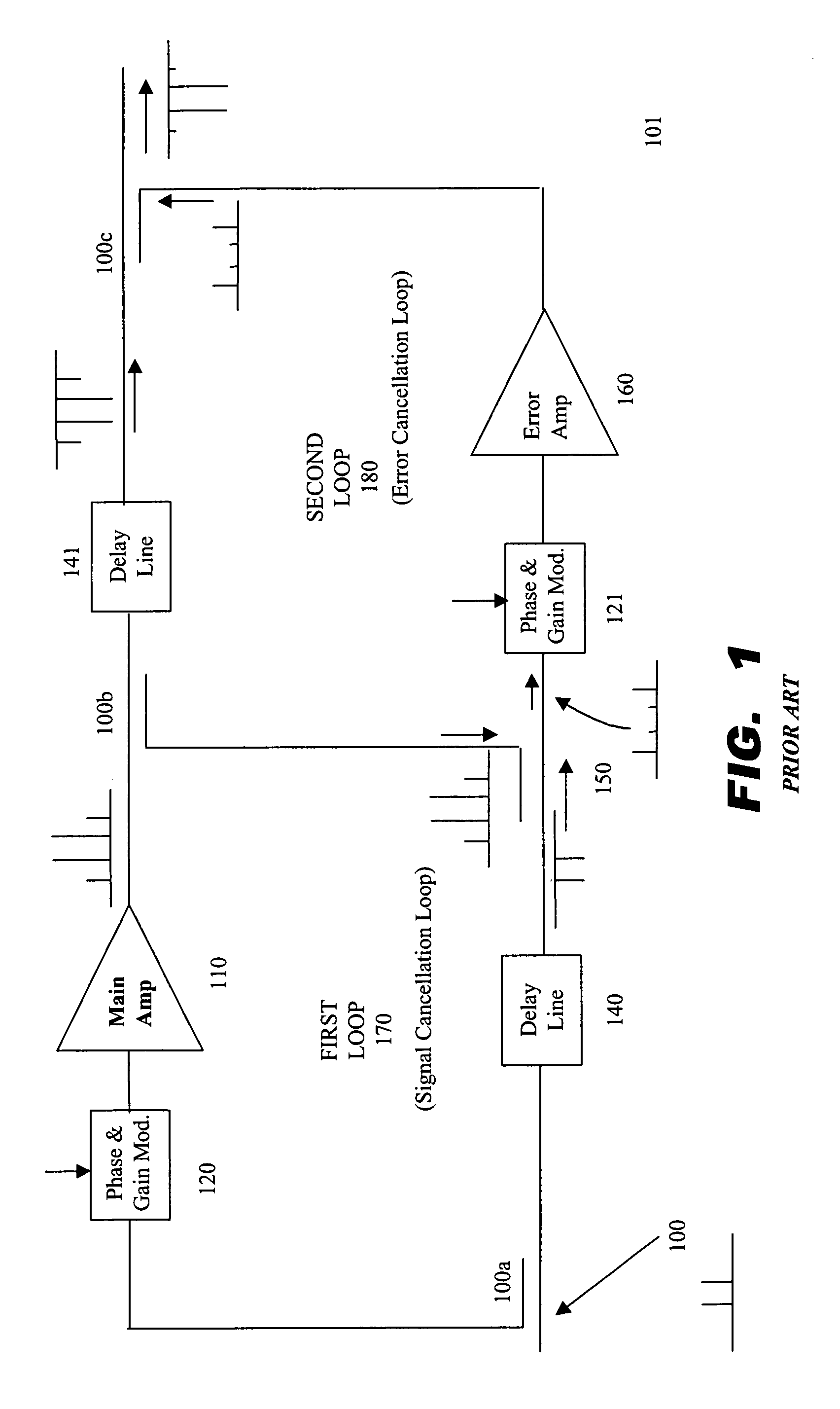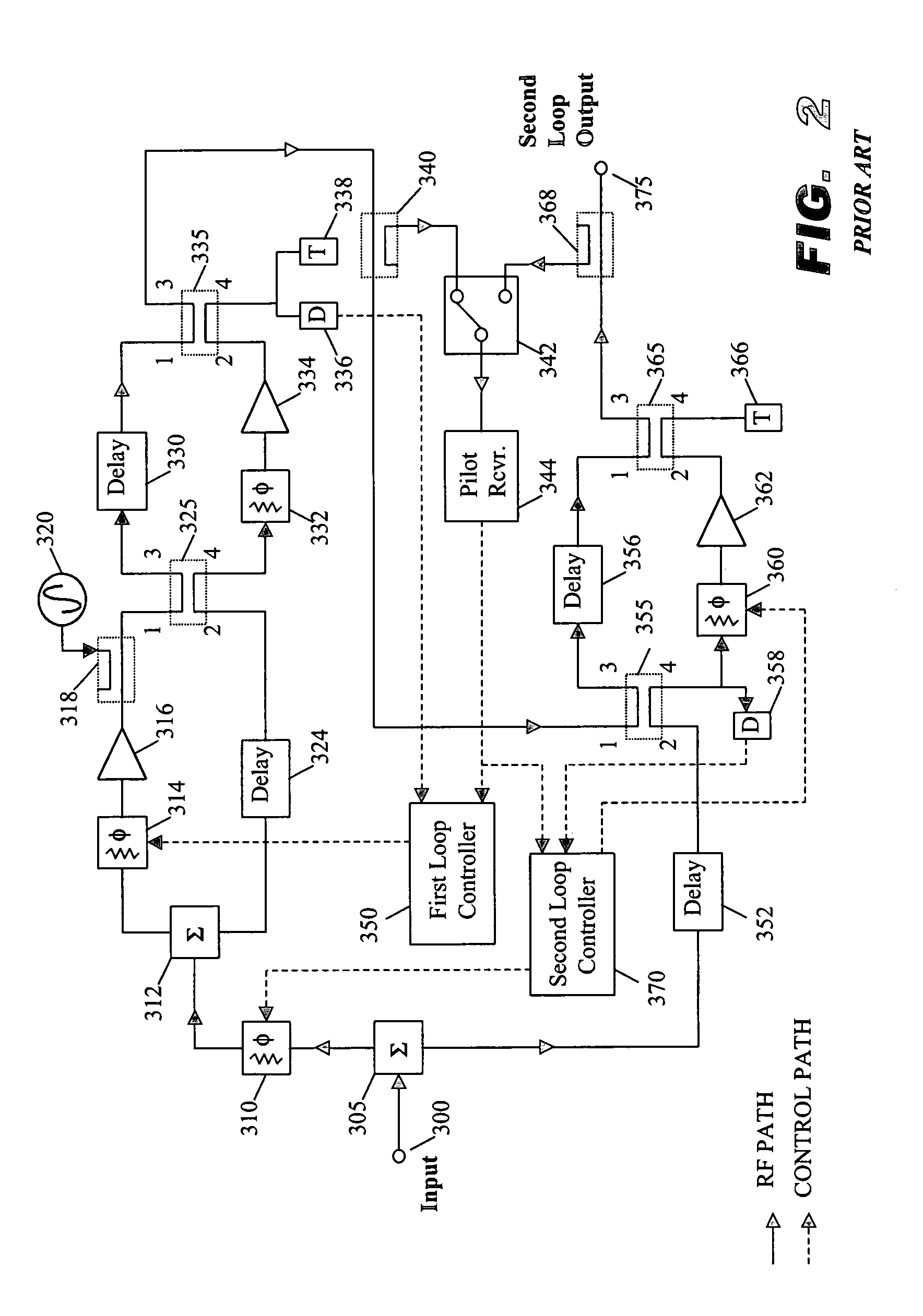System and method of carrier reinjection in a feedforward amplifier
a feedforward amplifier and carrier technology, applied in the field of electronic communication systems, can solve the problems of increasing the complexity of overall amplifier adjustment, increasing the complexity of amplifier modification, and increasing the cost of amplifier modification, and achieving small improvement in performance, so as to achieve the effect of canceling small signal distortion
- Summary
- Abstract
- Description
- Claims
- Application Information
AI Technical Summary
Benefits of technology
Problems solved by technology
Method used
Image
Examples
Embodiment Construction
[0049]In the following description, reference is made to the accompanying drawings which form a part hereof, and in which is shown by way of illustration, a specific embodiment in which the invention may be practiced. It is to be understood that other embodiments may be utilized and structural changes may be made without departing from the scope of the present invention.
[0050]FIG. 3 is a block diagram of conventional dual loop feedforward power amplifier. FIG. 3 is the same as FIG. 1 except that a second feedforward power amplifier 111 replaces the main amplifier 110 of FIG. 1 which was shown as a single gain block, such as a simple cascade of one transistor amplifiers of fixed gain, that do not have feedback or feedforward control.
[0051]Thus, the first feedforward amplifier is embedded as a gain block in a second feedforward amplifier. Such an arrangement is typically called a dual loop feedforward amplifier (DLFFA). Those skilled in the art will appreciate that various embodiments...
PUM
 Login to View More
Login to View More Abstract
Description
Claims
Application Information
 Login to View More
Login to View More - R&D
- Intellectual Property
- Life Sciences
- Materials
- Tech Scout
- Unparalleled Data Quality
- Higher Quality Content
- 60% Fewer Hallucinations
Browse by: Latest US Patents, China's latest patents, Technical Efficacy Thesaurus, Application Domain, Technology Topic, Popular Technical Reports.
© 2025 PatSnap. All rights reserved.Legal|Privacy policy|Modern Slavery Act Transparency Statement|Sitemap|About US| Contact US: help@patsnap.com



